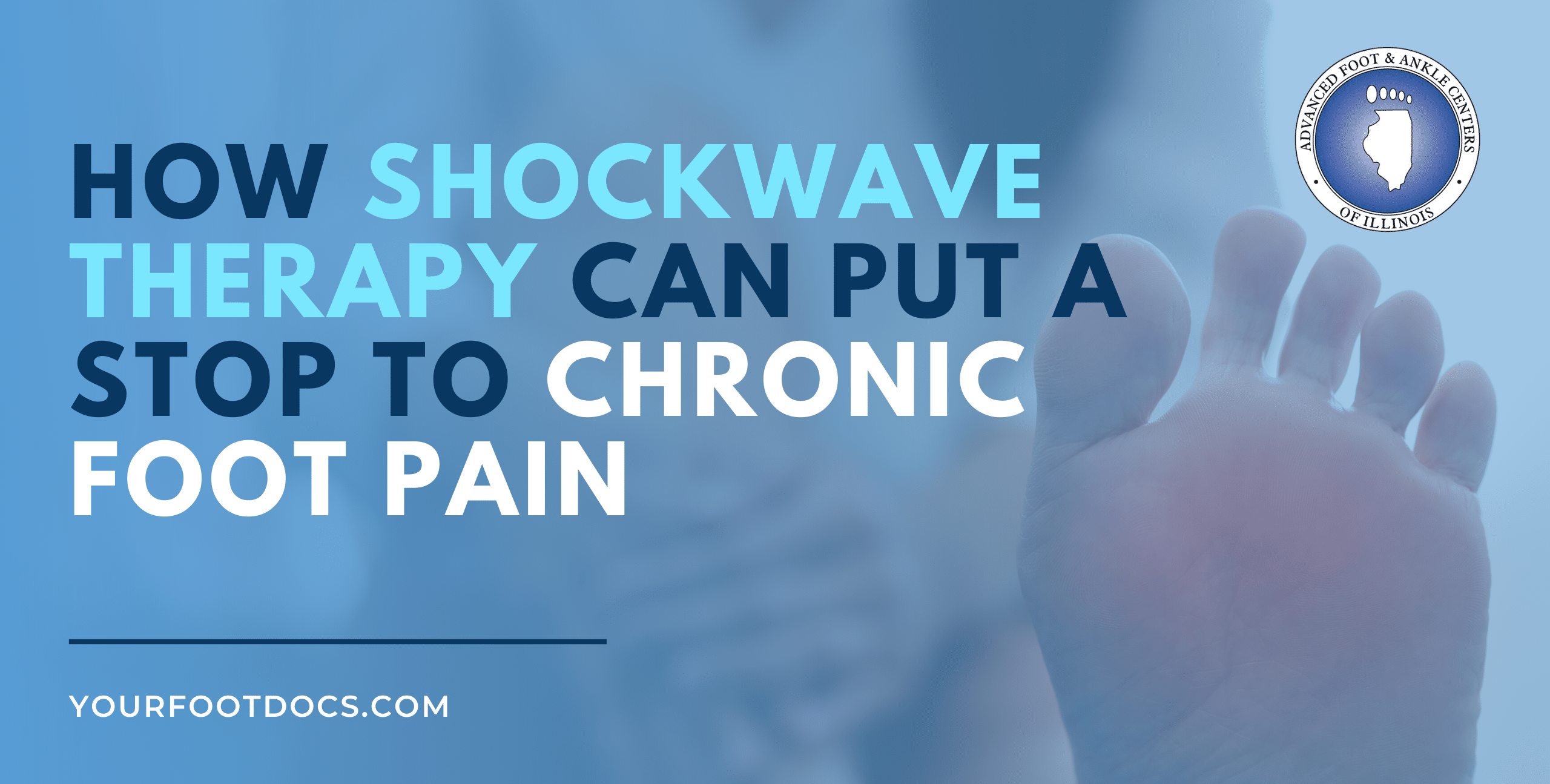How Shockwave Therapy Can Put a Stop to Chronic Foot Pain
Patients see us with chronic pain in their heels or other parts of their feet all the time, and we always strive to find the best and most efficient ways to restore their comfort and get them back to doing the things they love without that persistent aching.
In many cases, we can have a patient feeling better with “tried and true” traditional treatments, such as rest, changes in footwear, medication, and/or stretches and exercise.
But each case of chronic heel or foot pain is different. The same solution or set of treatments may not provide the best results for every patient. A huge part of the care we provide is fully evaluating a situation and how it is affecting each patient’s life. That way, we can tune our recommendations to what will have the most significant impacts on your recovery and comfort.
Sometimes, when traditional treatments don’t seem to cut it or the circumstances otherwise call for them, we may recommend more advanced treatments. These often take the form of technologically based methods.
When the problem revolves around chronic pain based in soft tissue injuries, one option we may consider is shockwave therapy.
Shockwave is perhaps one of the coolest and/or most intimidating-sounding treatments we have, depending on your outlook. However, there is nothing to fear about this tech!
What is Shockwave Therapy?
Shockwave therapy, also known as “extracorporeal shockwave therapy” or ESWT, is a form of treatment that stimulates the body’s own natural healing processes.
It is non-invasive, meaning that no surgery is part of it whatsoever, and you do not need to do anything to prepare before or after a session. When you’re done with a treatment, you will be able to continue your day as normal.
Who is Most Eligible for This Treatment?
Shockwave therapy is most recommended for patients who have been suffering from chronic pain due to a soft tissue injury.
When it comes to foot pain, the most common sources we see come from plantar fasciitis and Achilles tendon injuries, but other conditions may benefit from shockwave therapy as well.
In most cases, we tend not to consider shockwave therapy unless other, more traditional forms of treatment have already been attempted or it’s clear that they won’t do much good. Each case is different, and we will be more than happy to discuss all the different factors as they relate to your situation—once we have had a chance to learn it, of course.
How Does Shockwave Therapy Work?
Contrary to how the name might sound, there is no actual electrical “shock” as part of this treatment. The waves being used are actually soundwaves.
A typical session begins by applying a gel to the skin, to help improve the interface between the tool and your body. We then apply a wand to the area, which sends soundwaves through the skin and into the site of an injury.
The purpose of these focused waves is to cause mild, stimulating aggravation within the area. This both increases blood flow to the area, and can also encourage cells to pick up or accelerate their repair functions.
Both of these responses are important, because they encourage faster repair and provide the area more of the tools they need to make these repairs, via the bloodstream. You can think of it a bit like sending more trucks of supplies to a construction site and telling the workers to pick up the pace.
Does Shockwave Therapy Hurt?
You can expect some mild discomfort during a session. Some patients describe it as similar to being snapped repeatedly by a rubber band. A typical session only lasts 5-10 minutes, and most patients are able to endure the discomfort during this time.
However, that does not mean you should just try to bear it if you are feeling significant pain during a session! No two cases are the same, and it may be very possible that a session may cause you pain. If so, we can treat the area with a minor local anesthetic for greater comfort.
You may also expect some temporary soreness or swelling, lasting up to a few days following the procedure. This is a natural inflammatory response and part of the healing process. Taking anti-inflammatory medications at this point might slow down the results, so we would ask you to speak with us before doing so.
How Long Would Treatment Last?
Sessions themselves are quite short, but it usually takes a course of sessions to achieve full results.
Once again, the overall number of treatments may vary from case to case, but a common schedule may consist of one session per week for 3-6 weeks.
Find the Solutions to Your Chronic Foot and Ankle Pain
Whether shockwave or another option is the best form of treatment for you, one thing is for certain: you won’t find any relief simply doing nothing!
In most cases, pain like this doesn’t go away on its own. In fact, the condition tends to worsen the longer it remains unaddressed.
Let our experts at Advanced Foot & Ankle Centers of Illinois help you find the relief you need in the ways that best suit your needs. Head to our Contact Page to find out how to reach the office nearest you, or to send us a message today!

